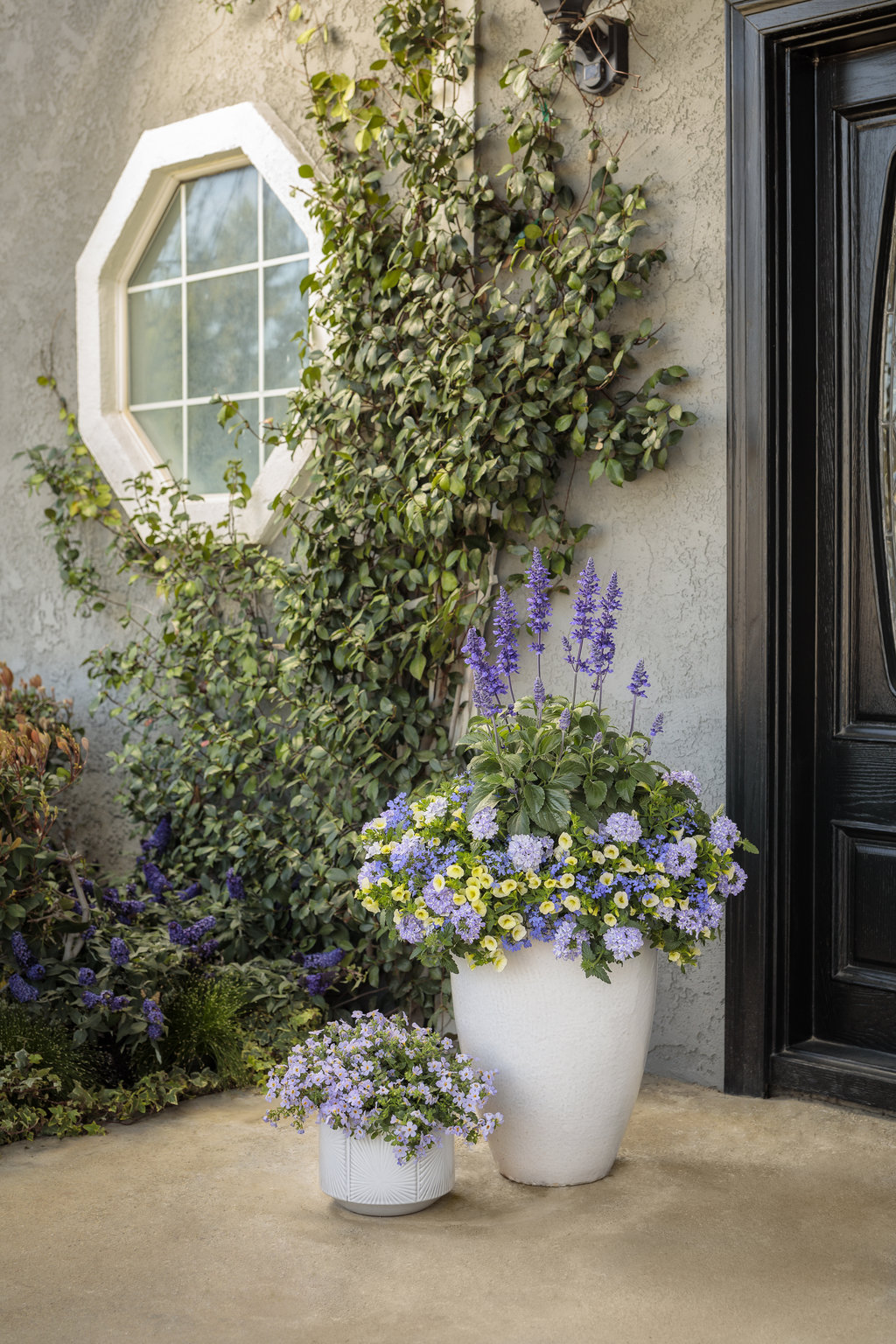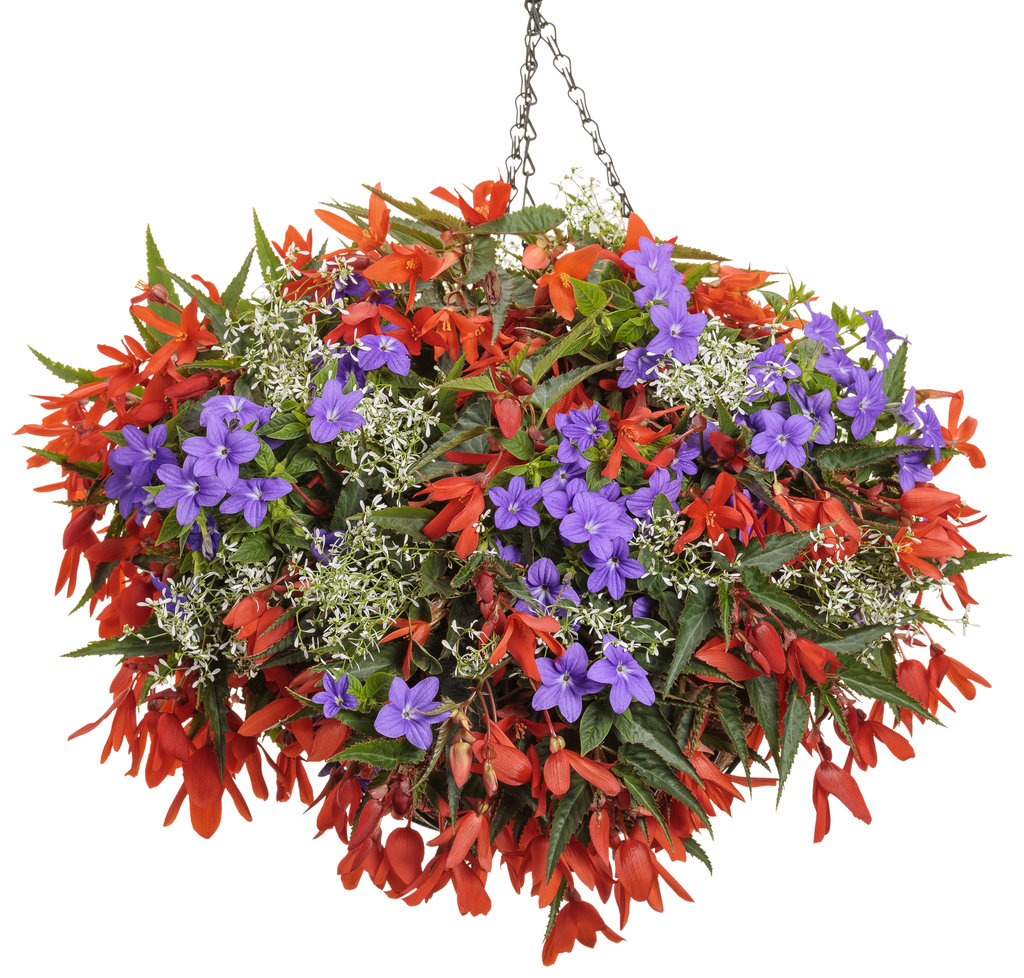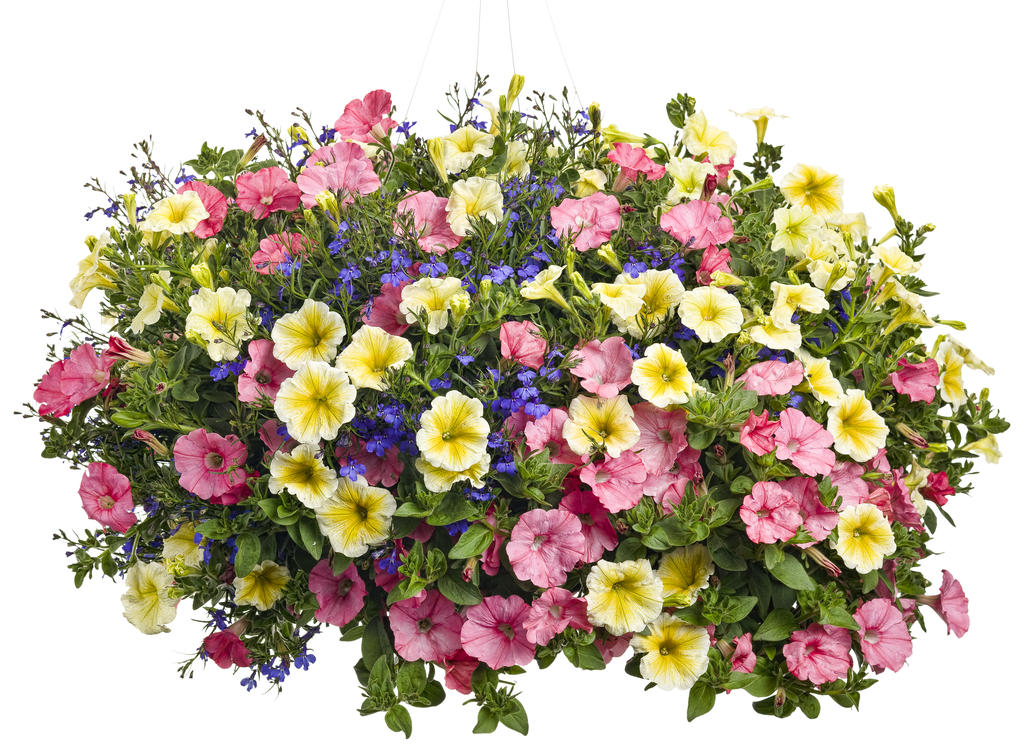What's Your Color? Blue
Learn about ways to use blue in your garden, along with some plants you can use that have blue flowers or foliage.
 Shades of blue and white create a serene setting. White is a neutral color, so this is still considered a monochrome planting. |
|
Gardens are as individual as the gardeners who plan, plant and tend them. While gardens at a basic level are collections of plants, they are also a balm for your soul, a retreat from the world at large and a little piece of paradise to call your own. But, in the end, the personality of your garden really does mostly come down to the plants you choose and the manner in which you plant them.
Formal versus informal plantings will impact the feel of your garden. Formal gardens have more structure, while informal gardens are more free-form and flowing. Your choice in garden style will also change the feel of your garden. A tropical garden, an English garden and a prairie garden will all evoke a different feel in the garden. But the biggest impact on how your garden will feel is the plants you choose to put in it.
The color, texture and size of the plants you choose will shape your garden on multiple levels. In this article, we are going to focus on the color blue.
Blue is a cool color. Cool colors create calm, serene spaces. These are the spaces you utilize when you need to wind down, de-stress and chill out. Pairing plantings with blue and other cool colors with seating and tables where you might read a book, work a crossword puzzle or watch the wildlife interact with your garden while sipping a cool beverage is a great way to go. Combine some of your cool color planted areas with shade and you’ll create a great respite away from the hot summer sun. Who doesn’t need an oasis now and then?
Find blue plants for your garden:
Cool colors also create a sense of spaciousness. If you have a small or cramped area, using blue and other colors will make that space feel larger than it is. The hot colors like orange, yellow and red make spaces feel smaller. Both cool and hot colors certainly have their place in the garden. Assessing how you intend to use a space can help you determine what colors to use for that space.
The question then becomes how to use blue in your garden, which means talking a bit about color theory. There are a few ways to use color and we will start with the easiest: monochrome color schemes.
Monochrome Planting – Different Shades of a Single Color Mixed Together
Everlast Recipe - Monochrome container in shades of blue
This is the easiest way to mix colors together. All you have to do is pick three or more shades of the same color class and plant them together in your garden bed or container. Why not two plants, you ask? When you are using two plants, you need to pay attention to make sure those two specific shades work well together rather than clashing. However, if you use 3 or more tones of the same color class, you no longer have to worry about clashing. Why not? The colors will blend just fine – I promise. Monochrome plantings are interesting in more subtle ways than most color pairings are and can add to the serenity of your cool color areas.
Analogous Plantings – Use Colors Next to Each Other on the Color Wheel
I am using a very simple color wheel, with six colors (orange, yellow, green, blue, violet/purple and red) to keep things easy to understand. In this simple color wheel blue is between green and violet/purple. When using analogous colors, you use two or more colors that are next to each other on the color where. For example, blue, green and yellow are analogous colors. With analogous colors being next to each other on the color wheel, they tend to blend well with each other. You’ll get more color differentiation than a monochromatic color scheme, but not a lot of contrast.
Sunny Afternoon Recipe - An example of the analogous colors blue, green and yellow.
Sky High Recipe - An example of analagous colors blue, violet and red.
Complimentary Colors – Opposites on the Color Wheel
Complimentary colors contrast highly with each other. For example, blue and orange are complementary colors; they are opposites on the color wheel and have strong contrast.. If you want a lot of drama and something really eye-catching, complimentary colors are a really good choice.
One thing to keep in mind is that every color has a wide range of hues within the main color category. A combination with bright blue and bright orange creates more of a party atmosphere. If you pair a chiffon yellow and apricot, you have contrast, but a much softer tone. If you are an Illini fan, you probably already know the joys of this color combination. For the rest of us, this color combination is surprisingly delightful!
Frosty Shade - Blue and orange are complimentary colors.
Color Triads – Colors on Each Point of an Equilateral Triangle Within the Color Wheel
This is the most complicated color scheme we are going to consider. Color triads utilize three colors that are evenly spaced on the color wheel. If you were to place a triangle with equal sides inside your color wheel, the three colors touched by the triangle points will make a triad. Since we are using a very simple color wheel with just six colors, there is only one triad that includes blue. The other two colors in the triad are red and yellow. Red, yellow and blue is actually one of my favorite color combinations. Triad color schemes tend to be eye-catching, even when soft colors are used. Triads usually look best when one color is the star and the other two are accents.
Santa Belle - Red, yellow and blue are a triad of colors.
Island Luau Recipe - Sky blue, pink and pale yellow are the softer side of blue, red and yellow.
If you haven’t already incorporated blue into your garden, I hope this article helps you to see the benefits and array of ways that blue can be included in your garden plans.
Learn more:
Browse more than a Thousand Ideas with our Container Recipe Search.
Learn the Thriller, Filler and Spiller Method for Designing Containers
Explore more Classic Blue Plants on Pinterest and with this Idea Board.











